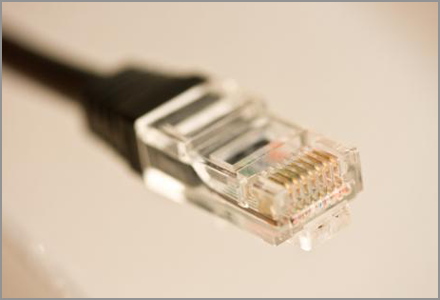Cat5 vs. Cat6 - What to Use and Why

When Gigabit first was being developed, cable and physical layer hardware manufacturers were under the impression it would run on 2 pairs - like 10-base-t and 100-base-t (fast Ethernet) - so they developed Cat6 cable to be able to handle the bandwidth. The final ratification of Gigabit Ethernet standards called for the switches to use all 4 pairs, so Cat6 was not needed. The next speed on the horizon is 10-Gig and it won’t run on 5, 5e, 5E, OR Cat6 – at least not past about 60’ (under the current 10-Gig specification requirements).
So, there is no benefit to Cat6 except “headroom”. The only time it would really be of noticeable benefit would be for super large file transfers like those common in hospitals (x-rays, MRIs, etc.) or architect firms with huge CAD files. But, even then, 5, 5e or 5E will work great. File transfer transmission time might be slightly increased, but it would hardly be noticeable from a user standpoint.
The only reason Cat6 is spec’d on jobs is because of anal-retentive engineers, egos, and ignorance – I tell people to save their money.
Check out the IEEE 802.3ab standard below:
IEEE 802.3ab, ratified in 1999, defines gigabit Ethernet transmission over unshielded twisted pair (UTP) category 5, 5e, or 6 cabling and became known as 1000BASE-T. With the ratification of 802.3ab, gigabit Ethernet became a desktop technology as organizations could use their existing copper cabling infrastructure.
1000BASE-T (also known as IEEE 802.3ab) is a standard for gigabit Ethernet over copper wiring.
Each 1000BASE-T network segment can be a maximum length of 100 meters (328 feet), and must use Category 5 cable or better. Category 5e cable or Category 6 cable may also be used.
In a departure from both 10BASE-T and 100BASE-TX, 1000BASE-T uses all four cable pairs for simultaneous transmission in both directions through the use of echo cancellation and a 5-level pulse amplitude modulation (PAM-5) technique.
The Telecommunications Industry Association (TIA) created and promoted a standard similar to 1000BASE-T that was simpler to implement, calling it 1000BASE-TX (TIA/EIA-854).[11] The simplified design would, in theory, have reduced the cost of the required electronics by only using one pair of wires in each direction. However, this solution required Category 6 cable and has been a commercial failure, likely due to the cabling requirement as well as the rapidly falling cost of 1000BASE-T products. Many 1000BASE-T products are advertised as 1000BASE-TX, due to lack of knowledge that 1000BASE-TX is actually a different standard. The confusion between 1000BASE-T and 1000BASE-TX probably stems from the fact that most popular form of Fast Ethernet (100 Mbit/s) is known as 100BASE-TX, and the fact that many products support multiple speeds of 10/100/1000Mb/sec and are often promoted as 10/100/1000BASE-TX.

